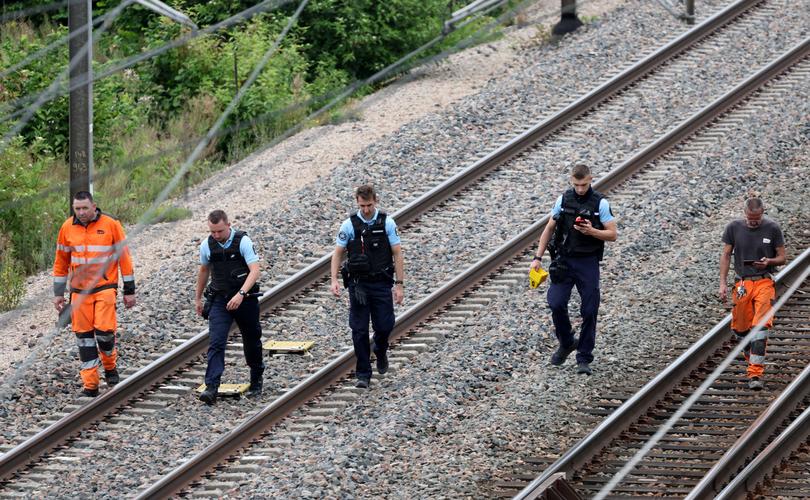More than 400 passengers narrowly avoid disaster after driver jumps to death from speeding train outside Paris

More than 400 passengers travelling by train near Paris have narrowly avoided disaster after their driver jumped from the locomotive, travelling at high-speed, to his death.
Within seconds, however, the train’s automatic controls detected the driver’ was missing and brought the carriages to a halt near Melum, a town 40km south of the French capital, at about 9pm on Christmas Eve.
The Ouigo service from Paris to Saint-Etienne was packed with people heading home for midnight Christmas celebrations.
Sign up to The Nightly's newsletters.
Get the first look at the digital newspaper, curated daily stories and breaking headlines delivered to your inbox.
By continuing you agree to our Terms and Privacy Policy.SNCF, the state-owned railway company, confirmed the death in a statement to local newspaper Le Parisien on Christmas Day.
“The entire railway family is in mourning and is very affected on this Christmas Day by this terrible tragedy,” wrote SNCF.
Staff on board the train assumed the driver, who had been locked in the cabin alone, had been incapacitated in some way as no one could make contact with him, The Times reports.
“We really couldn’t understand what had happened,” one told Le Parisien.
Another said “no one imagined the worst”.
A ticket inspector forced their way into the driver’s cabin 15 minutes after the train was brought to a stop, only to find it empty.
It took another two hours and an infra-red drone to discover the driver’s body after emergency services began searching the track.

The driver was later identified as 52-year-old Bruno Rejony, an “experienced driver” and rail union representative.
In a tribute on social media, a friend wrote Mr Rejony was “an exemplary comrade of rare integrity and intelligence... with a lot of sensitivity”.
“There is a lot of emotion, sadness and also a lot of modesty,” another wrote.
According to transport minister Philippe Tabarot it is the first time in the history of SNCF that a driver had leapt to his death from a train.
About 10,000 passengers were affected by the incident, which brought the north-south line of the French rail network to a stand-still for three hours.
Mr Tabarot, who was appointed to the portfolio on Monday, praised the automatic systems that brought the train to a safe stop.
“The driver wished to end his life in a solitary action. It could have been more serious if he had wanted to derail his train,” he said on CNews television.
The minister copped fierce backlash from the rail unions and opposition MPs for his “shameful comments” about the driver.
But Mr Tabarot said his words had been misinterpreted and that the incident “was first of all a human tragedy”.
A retired train driver told Le Parisien after the tragedy that being a driver of France’s high-speed rail service, TGV, was a “very lonely career”.
“You see no one all week. You have to be mentally very strong,” they said.
The TGV’s “automatic vigilance system” requires constant pressure on a pedal or handle. If pressure is released, an alarm sounds after about 50 metres. If there is no response from the driver, emergency braking is applied after another 50 metres.
The SNCF said: “The whole family of rail workers is in mourning and is very distressed by this tragedy.”
The Melun gendarmerie has opened an investigation into the circumstances surrounding the incident alongside an SNCF inquiry.
Lifeline 13 11 14
beyondblue 1300 224 636
In an emergency call Triple-0 (000)
